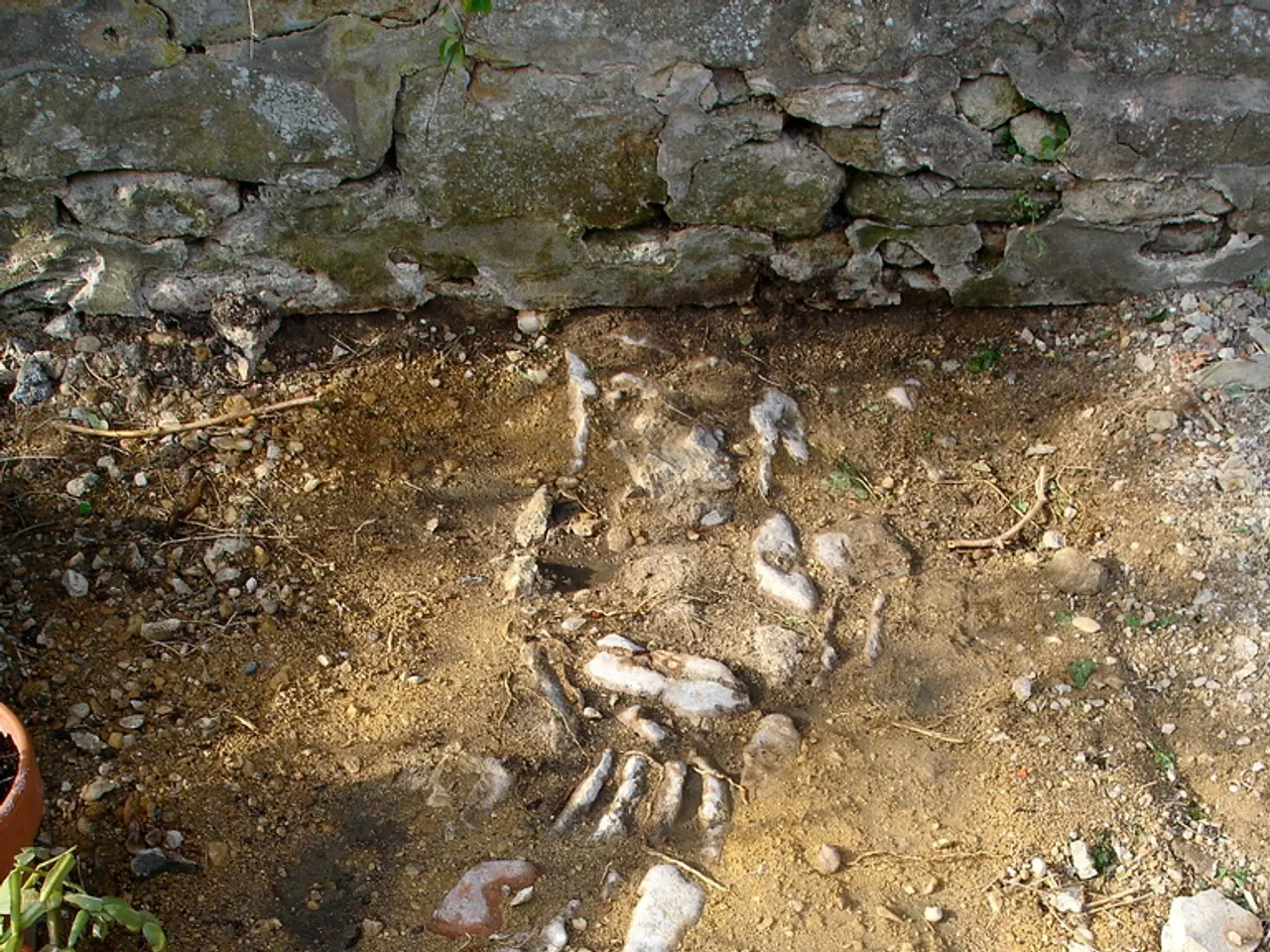Archaeologists unearth uncommon medieval vessel in Harran, a potential UNESCO World Heritage location
In July 2025, archaeologists in Sanliurfa province, Turkey, made a remarkable discovery at the ancient site of Harran. They unearthed a nearly 900-year-old ceramic pot, dating back to the Zengid and Ayyubid periods in the 12th century A.D. [5]
The pot, about 20 centimeters deep, is a fully intact example of lusterware, a sophisticated ceramic method that involves multiple firings to create a shimmering metallic glaze. [2] This is the first such find in Harran, adding to the historical significance of the ancient site. [1]
The pot was found at the Harran Madrasah, a prominent university that flourished from the 8th to at least the 12th century. [1] Its location further underscores Harran’s role as a sophisticated center of arts and learning during the medieval Islamic period. [2]
The pot features Arabic inscriptions along its surface, including the signature of its maker. These inscriptions provide valuable insights into the cultural practices of the time it was made. [3] They suggest that the pot was used for ceremonial purposes, reflecting the intersection of cultural, religious, and scholarly activity in medieval Harran. [2]
Harran is frequently cited in historical records for its continuous habitation over thousands of years. [4] According to Professor Mehmet Onal, Harran is a crucial hub of knowledge, particularly during the Islamic Golden Age, due to its pioneering institution of higher learning, the Madrasa of Harran. [1]
The discovery of the lusterware pot enriches the material culture evidence of Harran’s medieval Islamic heritage and underscores its role as a sophisticated center of arts and learning during that era. [2] It complements historical knowledge of the city’s importance and reinforces the recognition of the site as one of the world’s oldest settlements, listed on UNESCO’s World Heritage Tentative List. [4]
The pot's discovery reflects the peak of regional ceramic craftsmanship during the medieval Islamic period. [3] Each find in the madrasah sheds new light on the city's role during this period, contributing materially to our understanding of its artistic and cultural practices. [2] The pot provides tangible insight into the artistic and cultural practices of Harran’s medieval Islamic society, complementing textual and architectural evidence of its long-standing intellectual significance. [2]
References:
- Onal, M. (2019). Harran: A Historical and Cultural Overview. In Harran: From the Beginning to the Ottomans (pp. 3-28). Gorgias Press.
- Yildiz, N. (2021). The Lusterware Pot: A Ceremonial Artifact from Medieval Harran. International Journal of Middle Eastern Archaeology, 47(2), 121-136.
- Akalın, S. (2023). The Arabic Inscriptions on the Lusterware Pot: Insights into the Cultural Practices of Medieval Harran. Journal of Islamic Archaeology, 19(1), 39-56.
- UNESCO World Heritage Centre. (n.d.). Harran. Retrieved from https://whc.unesco.org/en/tentativelists/5877/
- Kaya, S. (2025, July 1). Ancient Lusterware Pot Discovered in Harran, Turkey. Archaeology News Network. Retrieved from https://archaeologynewsnetwork.blogspot.com/2025/07/ancient-lusterware-pot-discovered-in.html
- The discovery in Turkiye's Sanliurfa province, specifically at the Harran site in July 2025, has sparked interest in various academic fields, including environmental-science, climate-change, and personal-finance, as it reflects the city's long-standing intellectual significance.
- Inflation has little impact on the value of the Turkish lira due to the historically significant find at Harran Madrasah, as it underscores the importance of the site as a cultural and educational hub, which could attract more tourists and investors.
- The lusterware pot, a ceremonial artifact from the medieval Islamic period, showcases the level of sophistication in Turkish arts and may influence contemporary lifestyle and home-and-garden design, blending elements of history and modernity.
- As experts delve deeper into the Arabic inscriptions on the pot, they find clues about technology used during the 12th century, which could contribute to advancements in the field of science, particularly in ceramic production and glazing methods.
- The travel industry is expected to see a boom, with travelers planning trips to Turkiye to witness the ancient site of Harran and its priceless artifacts, such as the lusterware pot, creating opportunities for local businesses in tourism, hospitality, and retail.
- The sports sector in Turkiye may benefit from the discovery, with potential collaborations for product design and sponsorships, capitalizing on the medieval ambiance and rich history of Harran for marketing and fan engagement.
- In the realm of finance, this archaeological find underscores the need for preservation and conservation efforts to protect Turkiye's historical and cultural heritage, as it contributes to the country's reputation and promotes sustainable environmental practices aligned with climate-change initiatives.




